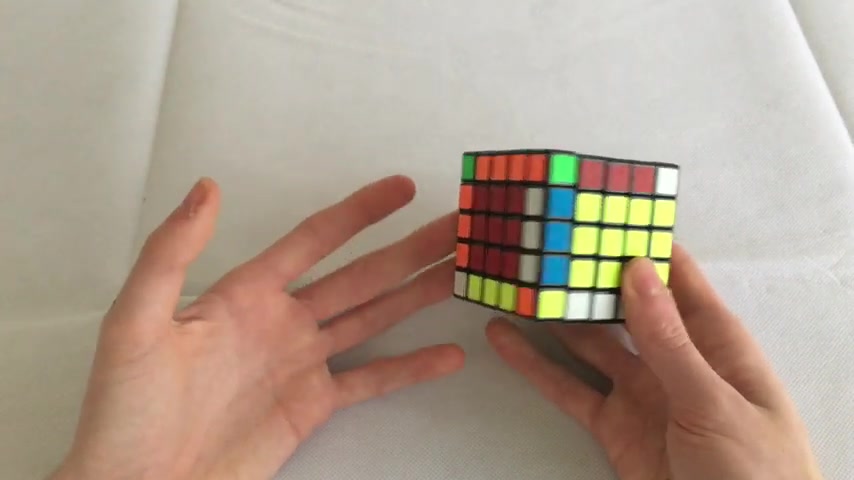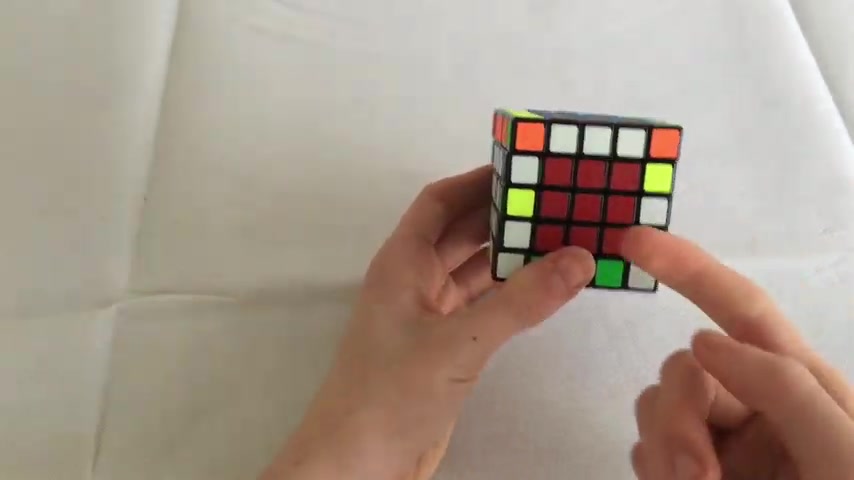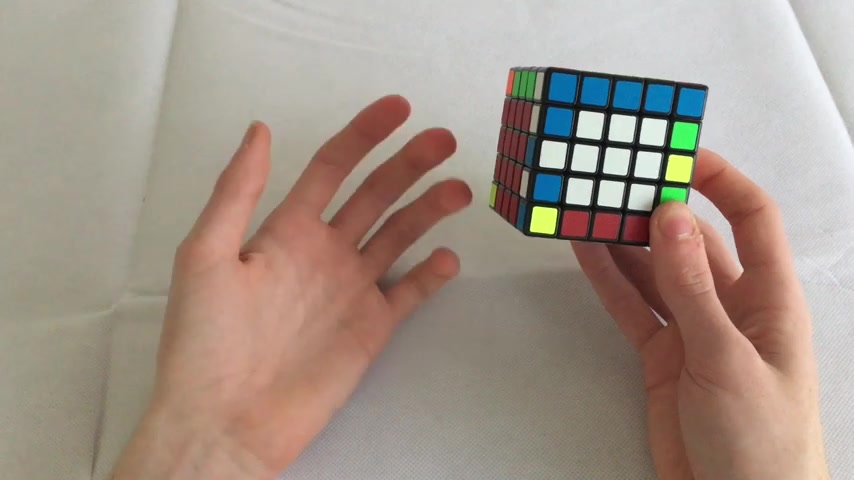https://www.youtube.com/watch?v=tDu13sZA96k
Last Two Edges on 5x5

What's up guys ?
The dudes cor here today , I'm gonna be showing you easy ways of doing the last two edges on five by five .
Now , the easy way of doing this is you probably already know all the ways of like moving edges around and everything and you probably have all your own method , but just real quick , the ways I like to uh do everything for algorithms and all that is because I don't know if you saw my tutorial .
If you haven't , you can always check that out down in the description .
Um And if you real quick , you thought that this was a five by five tutorial .
It's actually not , this is really for the last two edges .
If you're looking for a five by five tutorial link in the description , if you want to go check that out and then if you saw some other tutorial , I'll show you all the algorithms that I use particularly for five by five real quick .

So the one that I will use for swapping the edges to flip this pair is ru prime back prime R two and that'll flip this edge pair .
And then if I needed to uh after I do my slice , move the algorithm for that would be RF prime ur prime F .
And then that'll , that's when after I do my slice .
So just kind of remember both those algorithms and then it will help you out .
OK .
So normally how I taught you in my original five by five tutorial was that I would tell you to just , OK , go ahead and slice , just do some moves until you get all of the edges on their side together uh where they belong and then you'll just fix parity if you get it .
Well , there are some easier ways of doing this .
Now , what you might think is when you see this one here and then these two here , you might think , OK ?
So let's just go ahead and slice and then they're paired , right ?

They're simple .
No , that's not actually how you're gonna do it because when you perform the algorithm , which I'll show you real quick , you'll slice back .
And these break up .
The way you actually want to pair it up is you're gonna wanna put basically this piece into one that has not been used .
So for instance , this could go into here , but this is not the same piece as what we are slicing it into .
This is the same piece .
So to put slice this piece into this piece , we have to flip this edge pair around by doing our algorithm ru prime back prime R two And then as you see , we flip this around and then what we can do is we can slice this with its similar piece , which is here .
And then we'll perform our uh flipping around the edge pair after slicing , which is R prime fur prime F and then slice .
And as you can see , we've completed the two edge pairs .

Now , there are a lot of cases that you can have , I'm gonna briefly show you lots of them that you can have as quick as I can .
Uh Just remember you're going to need to slice the two that are very , that are similar that because if you don't , you're not gonna be able to solve either of the edges .
Now , in this case , you might notice how we have both of the edges , the similar ones on the same side and a different center edge where it's not supposed to belong .
So you might notice how these two need to swap , but we can't just slice the middle because that's not gonna do anything .
So instead we're just gonna go ahead and slice one of these edges into here .
So kind of like this and then we'll perform our algorithm and then we'll slice back and then you'll notice that we have these two here and then these here .
Now normally what you might do is you might slice like this and then perform our next algorithm because these two are similar .

But instead actually what we can do is we can flip this around and slice this piece into here .
Now , the reason why you're gonna do this is because if you perform this algorithm here , you're gonna end up with double parity and you don't want double parity .
So if we slice like this , we can actually , when after we perform our algorithm have no parity and all the edges then are solved , then you could have this case here uh which is also very similar to the last one , how you had both of these ones on the same side .
But the only difference of this case is is the fact that one of these edges was flipped .
So to get to the other case that we have before , all we need to do is just perform our algorithm by swapping it .
And then from there , we can do our algorithms of the same case of which we have before to solve this case .

So then we'll have this here , turn it around , then we have these two slice , perform the algorithm slice back and then there you go , the last two edges are salt .
Now cases like these , you really just can't avoid and there are a lot of them .
And when you come across them , you're just gonna have to deal with it .
So for instance , you can notice that we can go ahead and slice this or we can go ahead and slice this , which is fine .
But after you performed our regular algorithm that we do , you will notice that we have parity and there really is just no way of avoiding getting just a single parody .
So if you have this , just deal with it , you'll just have to perform our usual algorithm to get past it .
Now , this case , I am pretty sure everyone who is watching this is going to like .
So as you can see , we have double parity right here and this is one of the cases , everyone just does not like to have an easy way to get rid of this .

And it saves so much time is to perform the algorithm twice by swiping only two cases .
And then from there , the size will be solved .
So the way we're gonna do this is it really doesn't matter if you're just gonna slice a piece into the other side .
It doesn't matter as long as if it's just not the center one .
So slice perform our Algo algorithm and then slice back .
Now , as you can see , we have a very interesting case here , you'll notice where these ones lined up here .
So if we turn it around like this , we can go ahead and slice , perform our algorithm slice back and the two edges are solved .
This case saves so much time .
And I definitely would recommend you do using this because nobody likes having to perform the parody algorithm twice .
All right .
So that's pretty much everything for this video .
I know , there was a lot more edge cases that you can have , but all of this is intuitive that you'll really just have to figure out on your own .
All right .
So thank you all so much for watching .

If this video is helpful , please remember to hit that like button down below and hit the subscribe button as well as the bell notifications to be notified when upcoming videos are coming out for , there will be more coming out very soon .
So thank you all so much for watching and I'll see you all in my next video .
Are you looking for a way to reach a wider audience and get more views on your videos?
Our innovative video to text transcribing service can help you do just that.
We provide accurate transcriptions of your videos along with visual content that will help you attract new viewers and keep them engaged. Plus, our data analytics and ad campaign tools can help you monetize your content and maximize your revenue.
Let's partner up and take your video content to the next level!
Contact us today to learn more.